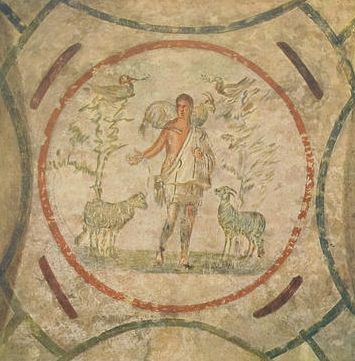My wife, Aubree, and I recently had a chance to get away for a few days to visit Rome—the Eternal City. It was a great visit and Rome truly is one of the greatest cities, if not the greatest. We spent a few days doing the normal tourist things like finding pizza and gelato.
One of our destinations—not too long after some gelato—was the Catacombs of Priscilla, “Regina Catacumbarum: The Queen of the Catacombs.” This catacomb, was used during the 2nd–5th centuries AD and houses some 40,000 Christian graves with a great number of Christian martyrs. The tour was an interesting experience and I marvelled that the tombs were used by rich and poor Roman Christians because they desired to be buried together so that they might all resurrect together.
A particular meaningful part of the tour was a room called the “Cubiculum of the Veiled Woman.” It is thought that these frescoes date somewhere to the second-half of the third century, but I think what is really interesting is that it has a biblical theology of resurrection of sorts represented through painted frescoes.
The centre of the room has a young woman praying with her arms extended, and directly on her left and right are other life scenes—possibly scenes from her life or the life of her family. And above her, in the centre of the ceiling is a painting of the Good Shepherd in Paradise surrounded by lambs, peacocks, and doves.
On the wall to the left is a painting of Abraham and Isaac. And on the wall to the right is a painting to the right is Shadrach, Meshach, and Abednego in the midst of the fiery flames. And in the archway of the room is the Prophet Jonah being vomited from the fish.
Each of these scenes depict resurrection, but it is interesting there is no picture of the empty tomb. It is clear that they put hope in that event, but these early Christians drew upon the Old Testament Scriptures as a way of depicting their hope of the resurrection of the dead. It appears—and I’m no Robert Langdon—that early Roman Christians understood that these Old Testament images reveal the character of God and his providential patterning of the future. What God has done in the past, they trust he will do again in the future.



Reblogged this on Talmidimblogging.
Pingback: Recommended Reading: April 8 | Pursuing Veritas
I loved visiting the catacombs back in summer of 2009!
They are great. Really enjoyable.